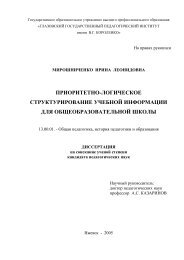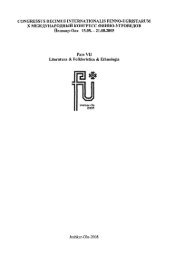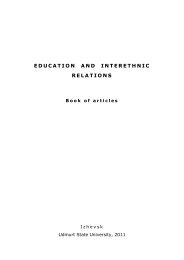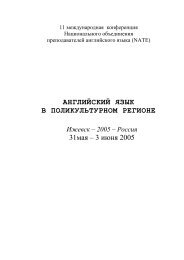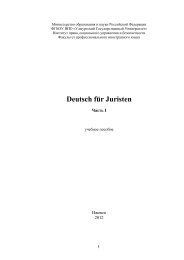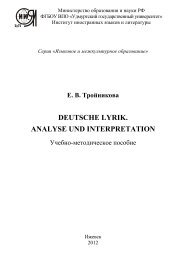Ð.Ð. ÐелинÑÐºÐ°Ñ ENGLISH-SPEAKING COUNTRIES
Ð.Ð. ÐелинÑÐºÐ°Ñ ENGLISH-SPEAKING COUNTRIES
Ð.Ð. ÐелинÑÐºÐ°Ñ ENGLISH-SPEAKING COUNTRIES
You also want an ePaper? Increase the reach of your titles
YUMPU automatically turns print PDFs into web optimized ePapers that Google loves.
Political structure<br />
The kingdoms of England and Scotland were separate states from the 9th<br />
century but came into personal union in 1603 when James VI of Scotland<br />
succeeded his cousin Elizabeth I as James I of England. Though remaining<br />
separate states, this Union of the Crowns meant that the whole of the island<br />
of Great Britain was ruled by a single monarch with two titles (King of<br />
England and King of Scots), and two parliaments, except during the<br />
Interregnum and during the joint reign of William and Mary, who jointly<br />
reigned over both Kingdoms. This changed with the Acts of Union 1707,<br />
from when the monarch of Great Britain ruled by the power of a single<br />
unified Crown of Great Britain and of a single unified parliament. The<br />
succession to the throne of England, Ireland and Scotland was determined<br />
by the English Act of Settlement, rather than the Scottish equivalent, the<br />
Act of Security as this was part of the terms agreed in the 1706 Treaty of<br />
Union and put into effect with the two Acts of Union the following year.<br />
The adoption of the Act of Settlement required that the heir to the English<br />
throne be a Protestant descendant of Sophia of Hanover, effecting the<br />
future Hanoverian succession.<br />
Legislative power was vested in the Parliament of Great Britain, which<br />
replaced the Parliament of England and the Parliament of Scotland. As with<br />
the modern Parliament of the United Kingdom, the Parliament of Great<br />
Britain included three elements: the House of Commons, the House of<br />
Lords, and the Crown-in-Parliament. England and Scotland were given<br />
seats in both the House of Lords and the House of Commons of the new<br />
parliament. Although Scotland's representation in both houses was smaller<br />
than its population indicated it should have been, representation in<br />
parliament was at that time based not on population but on taxation, and<br />
Scotland was given a greater number of seats than its share of taxation<br />
warranted. Under the terms of the union, Scotland sent 16 representative<br />
peers to the Lords and elected 45 members to the Commons, with the rest<br />
being sent from England and Wales.<br />
Britain in the 18th century<br />
England and the Netherlands entered the Nine Years' War as allies, but the<br />
conflict – waged in Europe and overseas between France, Spain and the<br />
Anglo-Dutch alliance – left the English a stronger colonial power than the<br />
Dutch, who were forced to devote a larger proportion of their military<br />
budget on the costly land war in Europe. The 18th century would see<br />
13



